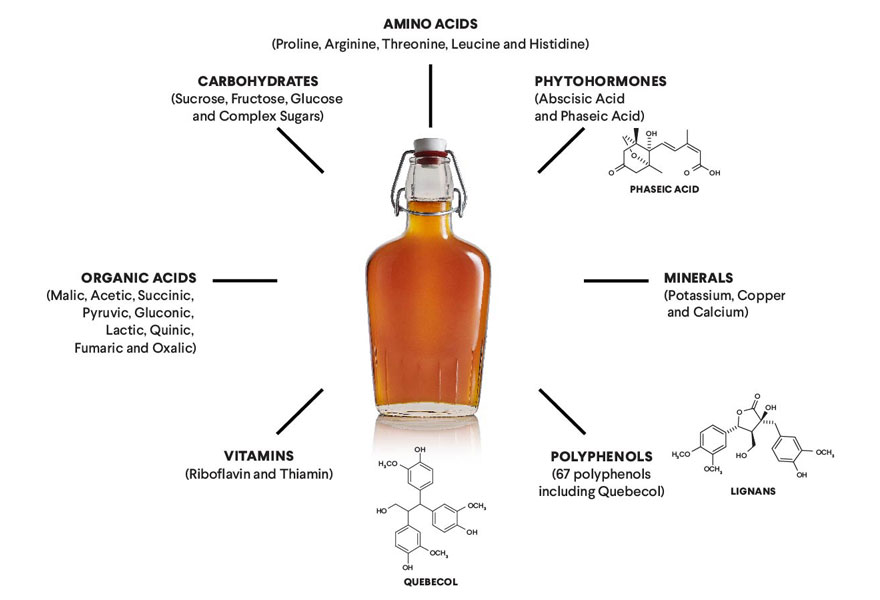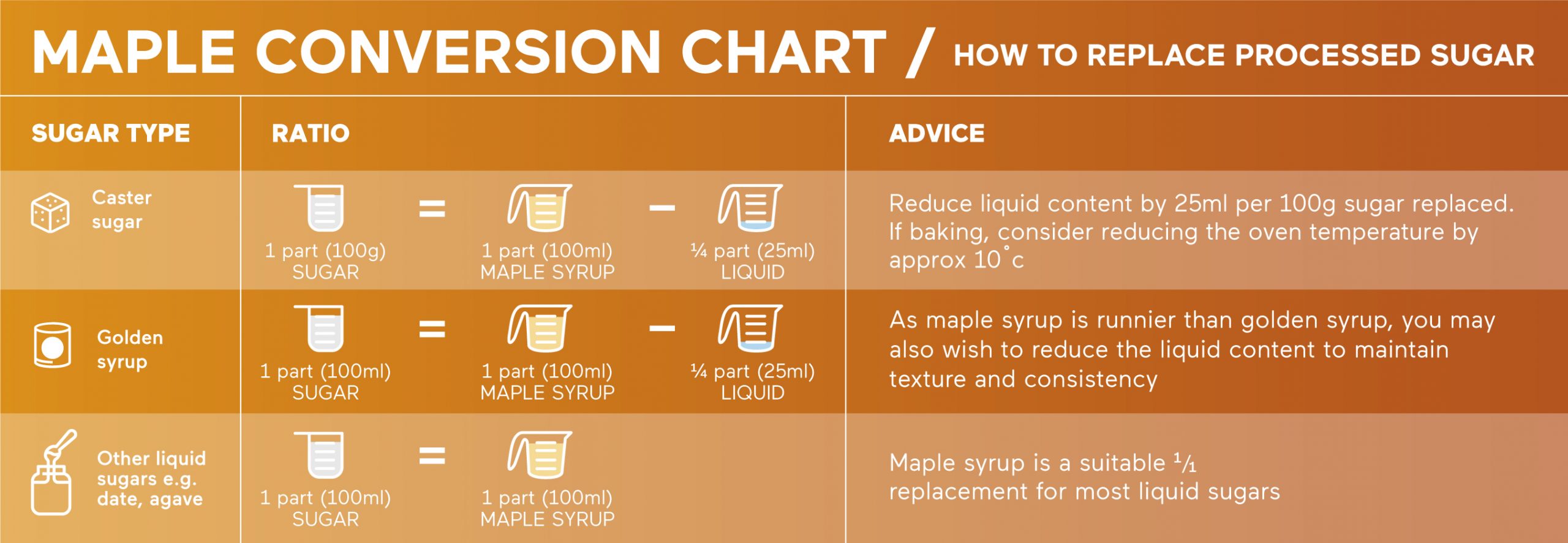Is maple syrup low FODMAP?
Maple syrup & IBS
For those navigating the difficulties of a low FODMAP diet, finding suitable sweeteners can be a challenge. If you’ve ever wondered, “Is maple syrup low FODMAP?” the answer is a reassuring “yes”. Pure maple syrup is considered low FODMAP and can be enjoyed in moderation by individuals with irritable bowel syndrome (IBS) or other digestive sensitivities. Let’s explore why maple syrup is such a great choice for this dietary approach and how it can be incorporated into your meals.
What is FODMAP and What Does FODMAP Stand For
FODMAPs are fermentable oligosaccharides, disaccharides, monosaccharides, and polyols, short-chain carbohydrates that some people struggle to digest. For individuals with IBS, consuming high-FODMAP foods can lead to bloating, abdominal pain, and other uncomfortable symptoms. Managing these symptoms often involves limiting foods high in FODMAPs while finding alternatives that are easier on the digestive system.
When it comes to sweeteners, many popular options like honey, agave syrup, and molasses are high in fructose, making them unsuitable for a low FODMAP diet. However, maple syrup stands out as an exception due to its unique composition.
Why Maple Syrup Is Low FODMAP
Pure maple syrup is primarily composed of sucrose, with only small amounts of fructose, less than 4% of its total carbohydrate content. This low fructose level makes it well-tolerated by most people following a low FODMAP diet. According to Monash University, a leading authority on FODMAP research, maple syrup is safe to consume in servings of up to two tablespoons per meal. This portion size is more than enough to sweeten recipes or drizzle over your favourite dishes.
It’s important to note that only pure maple syrup qualifies as low FODMAP. Maple-flavoured syrups or blended products often contain high-FODMAP ingredients like corn syrup or added fructose. Always check the label to ensure you’re choosing 100% pure maple syrup.

Comparing Maple Syrup to Other Sweeteners
When compared to other sweeteners, maple syrup emerges as one of the best options for those on a low FODMAP diet. Honey and agave syrup, for example, are high in fructose and can trigger IBS symptoms. Golden syrup and molasses also fall into the high-FODMAP category due to their sugar composition.
Refined sugars like white or brown sugar are technically low FODMAP because they consist of sucrose without free fructose or glucose. However, these lack the nutritional benefits and natural appeal of pure maple syrup. Unlike processed sugars, maple syrup retains trace amounts of minerals like manganese and zinc, along with antioxidants that contribute to overall health.

Incorporating Maple Syrup into a Low FODMAP Diet
One of the key advantages of maple syrup is its versatility in both sweet and savoury recipes. Its rich flavour pairs beautifully with a variety of ingredients, allowing you to enjoy it across meals without compromising your dietary needs.
For breakfast, drizzle pure maple syrup over porridge made with gluten-free oats or stir it into lactose-free yoghurt for a touch of natural sweetness. It also works wonderfully as a sweetener in smoothies or baked goods like muffins and flapjacks. If you’re looking for inspiration, try these delicious Maple Syrup Flapjacks, they’re packed with flavour and perfect for snacking.
In savoury dishes, maple syrup can add depth and complexity. Use it as part of a marinade for meats like chicken or salmon or mix it into salad dressings for a subtle sweetness that balances tangy flavours. For example, our Maple and Soy Glazed Mackerel recipe highlights how well maple complements savoury ingredients.
Tips for Using Maple Syrup on a Low FODMAP Diet
While maple syrup is low FODMAP-friendly, moderation is key. Stick to recommended portion sizes, such as only adding two tablespoons per meal, to avoid overloading your system with sugars. Pairing it with other low-FODMAP ingredients ensures your meals remain balanced and suitable for your dietary needs.
When shopping for maple syrup, always choose pure varieties rather than imitation or blended products. Pure maple syrup is made by boiling the sap of sugar maples without any additives, preserving its natural qualities. Imitation syrups often contain high-FODMAP ingredients that could trigger symptoms.
The Nutritional Benefits of Maple Syrup
In addition to being low FODMAP, maple syrup offers several nutritional perks that set it apart from other sweeteners. It contains antioxidants like phenolic compounds, which have anti-inflammatory properties and may help protect against oxidative stress. Minerals such as manganese support enzyme function and bone health, while zinc contributes to immune function and wound healing.
Although these nutrients are present in small amounts relative to the serving size typically used in recipes, they add an extra layer of benefit compared to refined sugars or artificial sweeteners.
Low-FODMAP Recipes with Maple Syrup
If you’re ready to incorporate this versatile ingredient into your cooking, there’s no shortage of ideas to explore. For dessert lovers, this Maple Rice Pudding offers a comforting treat that’s both satisfying and low FODMAP-friendly. Alternatively, savoury dishes like Maple Shakshuka showcase how well maple complements bold spices and fresh vegetables.
For those who enjoy experimenting in the kitchen, consider using maple syrup as a glaze for roasted vegetables like carrots or parsnips or blending it into homemade barbecue sauces for an extra layer of flavour.
Maple Syrup and Low FODMAP Diets: A Low FODMAP Sweetener
Navigating dietary restrictions doesn’t mean sacrificing flavour or enjoyment in your meals. Pure maple syrup is not only low FODMAP but also a natural and nutritious alternative to many other sweeteners. Its versatility allows you to use it across a wide range of recipes while adhering to your dietary needs.
Whether you’re drizzling it over pancakes or incorporating it into marinades and sauces, this golden liquid brings richness and balance to every dish it touches. By choosing pure maple syrup and sticking to recommended portion sizes, you can enjoy its unique flavour while supporting your digestive health.
A natural source of energy
Maple syrup is a natural source of energy. Check out our recipes for food and drinks before, during, and after exercise.
)